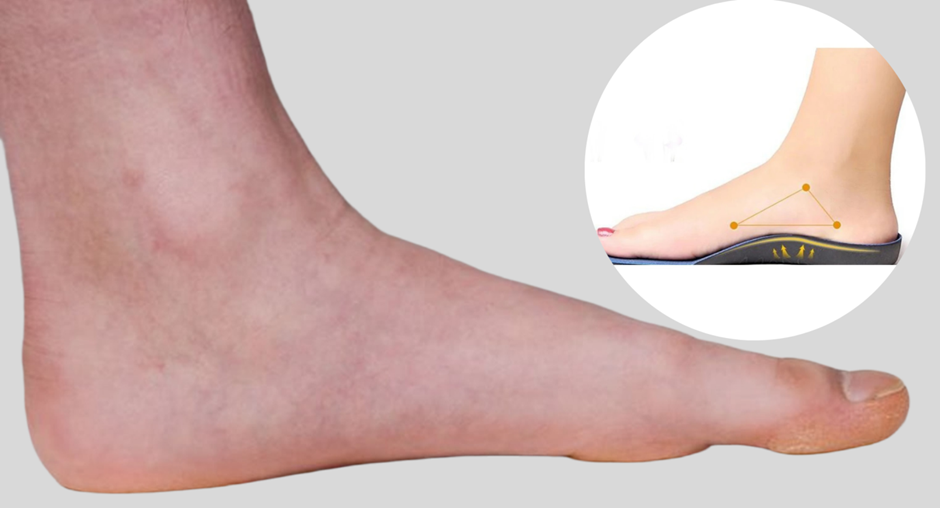Plantar Fasciitis Medication
Medication for plantar fasciitis, include NSAID's like iburprofen, Corticosteroid Injections, oral Corticosteroid, and Analgesics.
These pharmacological treatments below are mainly used for alleviating pain, reducing inflammation, and making it possible for patients to easily engage in whatever rehabilitative processes one requires for the treatment of plantar fasciitis.
Medication is therefore not used as a stand-alone treatment but as part of a treatment regimen including exercise, stretching, and custom orthotics for plantar fasciitis.
4 Classes of Plantar Fasciitis Medication
There are four common classes of medication used in the treatment and management of plantar fasciitis. Each class offers unique benefits and risks based on their mechanisms of operation.
1. Nonsteroidal Anti-Inflammatory Drugs (NSAIDs)
This class of medication is quite common, especially as a first-line treatment. It is dual-functioning, offering both analgesic and anti-inflammatory properties.
NSAIDs work by preventing the production of cyclooxygenase enzymes (COX-1 and COX-2). These enzymes are responsible for the synthesis of prostaglandins, a compound that increases the occurrence of inflammation and the body's ability to feel pain. This makes NSAIDs effective for relieving pain and inflammation arising from plantar fasciitis.
Examples of NSAIDs
Examples of the most common NSAIDs include:
-
Ibuprofen
-
Diclofenac
-
Naproxen
Dosage
NSAIDs need to be taken on precise dosage instructions. Some dosage instructions are:
-
Ibuprofen - 400 to 600 mg to be taken every 6 to 8 hours. The total intake should never exceed 3,200 mg daily.
-
Diclofenac - 50 mg to be taken two to three times daily. The topical gel can be applied to the pain point up to four times a day.
-
Naproxen - 250 to 500 mg to be taken twice within a 24-hour period. On the first day, the maximum intake should not exceed 1250 mg. Thereafter, it should not exceed 1000 mg daily.
Pros
Some of the benefits that NSAIDs offer include:
-
Quick relief from pain and inflammation
-
Combines well with physical therapy
-
Affordable and easily available
Cons
On the flip side, some possible cons of NSAIDs include:
-
Increased risk of side effects like ulcers, gastrointestinal irritation, and cardiovascular issues with prolonged use. There’s also the risk of kidney issues for predisposed individuals
-
It does not address the underlying effect
-
Increased risk with alcohol use, age, and concurrent use of anticoagulants
Considerations
Trials have shown that NSAIDs are indeed effective at reducing pain and inflammation, the two top conditions suffered by patients of plantar fasciitis. However, they should only be used for short-term relief while a more permanent treatment is being administered.
2. Analgesics (Non-NSAID)
This class of medication is prescribed for pain relief in patients who cannot safely take NSAIDs for health reasons. Unlike NSAIDs, it has different sub-classifications.
Acetaminophen (Paracetamol)
Sub-group reduces pain by preventing the production of COX-3, a different variant of cyclooxygenase from those described under NSAIDs. Because they mainly work in the brain and spinal cord, they only reduce the body's ability to feel pain without impacting inflammation at all.
Dosage
Acetaminophen is often given in doses of between 500 to 1000 mg every 4 to 6 hours. The daily maximum intake varies depending on location. It, however, ranges from 3000 to 4000 mg.
Pros
Some of the benefits of acetaminophen include the following:
-
Offers mild to moderate relief from pain
-
Can be used by patients with cardiovascular issues, renal risks, or other conditions that make NSAIDs unsuitable
-
Can provide some relief for physical therapy
Cons
For cons, acetaminophen:
-
Does not have any anti-inflammatory properties
-
May not offer enough pain relief in some cases
-
Can result in liver toxicity when taken with alcohol or in extremely high doses
Opioid-like Analgesic
This is another sub-category under non-NSAID analgesics that are described as “μ-opioid receptor agonist” because they suppress the pain signals in the brain while improving the body's pain control.
Examples of Opioid-like Analgesics
Some examples include:
-
Tramadol
-
Tapentadol
Dosage
-
Tramadol - For immediate release, 50 to 100 mg can be taken every 4 to 6 hours as required. The recommended maximum per day is 400 mg. For extended release, especially when dealing with chronic pain, a different formulation is prescribed.
-
Tapentadol – This is a stronger μ-opioid receptor agonist than tramadol. For immediate release, 50 to 100 mg can be taken every 4 to 6 hours. The daily maximum will depend on formulation and indication.
Pros
Some benefits of these opioid-like analgesics include the following:
-
Can be used by patients who cannot be given NSAIDs for health reasons
-
Offers pain relief
Cons
Some of disadvantages associated with these opioid-like analgesics include the following:
-
Absence of inflammatory properties
-
Risk of addiction
Considerations
These do not offer as robust a relief as NSAIDs. However, when it is not medically advisable to use NSAIDs, they can help alleviate pain. Remember that they will neither help with inflammation nor the underlying cause.
3. Corticosteroid Injections
Corticosteroid injections have proven to be effective against inflammation. They inhibit the production of prostaglandins and leukotrienes by blocking the phospholipase A₂ enzyme. By restricting inflammatory pathways, inhibiting the production of cytokine, and the infiltration of leukocytes, it is able to reduce the swelling, redness, and pain.
Examples of Corticosteroid Injections
Some examples of this injection include:
-
Triamcinolone Acetonide
-
Dexamethasone Sodium Phosphate
-
Betamethasone
-
Methylprednisolone Acetate
Dosage
-
Triamcinolone Acetonide – Usually given in doses of 5 to 40 mg
-
Dexamethasone Sodium Phosphate – Often given in doses of 1 to 2 mg
-
Betamethasone – Given in doses of 1.5 to 3 mg
-
Methylprednisolone Acetate – Usually given in doses of 10 to 40 mg
Pros
Some benefits of corticosteroid injections include:
-
Effectiveness for cases that have been unresponsive to conservative treatment for weeks
-
Pain relief for up to 12 weeks
Cons
Below are some of the cons of using these injections:
-
Does not offer long-term or permanent pain relief
-
Risk of infection, fat pad atrophy, and plantar fascia rupture from repeated injections
-
Temporary flare-up after injection
Considerations
Corticosteroid injections are effective at reducing inflammation, but they do not address the underlying cause, leading to high cases of recurrence. They are therefore best for short-term pain relief while the underlying cause is addressed.
3. Oral Corticosteroids
The difference between these and corticosteroid injections is the delivery method. While the injections are directed at or close to the target area, the oral variation is delivered systemically.
This is not an option of choice except in cases where injections cannot be administered. Sometimes, they may also be used in severe cases of bilateral plantar fasciitis.
Examples of Oral Corticosteroids
Some examples include:
-
Prednisone
-
Methylprednisolone
Dosage
Both prednisone and methyprednisone only differ in their potency, with methyprednisone being slightly more potent than prednisone.
-
Prednisone - Given at a reducing rate, starting with 40 mg/day for 2 days, and then decreasing by 10 mg every 2 days.
-
Methylprednisone – Given its slightly more potent concentration, its administration can begin with 32 mg per day for 2 days, and then begin to decrease by 8 mg every 2 days.
Pros
-
Can be used when injection is not possible
-
May be used in cases of severe bilateral inflammation
Cons
-
Side effects like mood changes, elevated blood sugar, increased appetite, insomnia, blood pressure elevation, and fluid retention
· Not suitable for patients with osteoporosis, diabetes, or severe infection
Consideration
Injections have better, verifiable records of efficiency, and so are preferred. Oral corticosteroids can only be considered when injection is not a viable option.
Emerging Medication
Aside from the 4 classes of plantar fasciitis medication discussed above, there are some other options that are gradually emerging, and we will conclude by briefly looking at them.
Platelet-Rich Plasma (PRP)
This experimental treatment aims to use the body's own healing properties to promote the natural healing of the plantar fascia. While a report in The Journal of Orthopedic Research noted that this injection resulted in significant pain relief and improvement in functions at 6 to 12 months when compared to corticosteroids, many other results are not consistent with it.
Topical Analgesics
These are creams or patches that contain ketamine, capsaicin, or lidocaine and are used topically for localized pain relief. You may, however, experience side effects like skin burning or irritation.
Botulinum Toxin Injections
This is another experimental medication being put forward as being able to control the perception of pain and also reduce muscle spasms. Due to the absence of sufficient data, its use is still very minimal.
Conclusion
The treatment of plantar fasciitis cannot be handled with medication alone. The medications we discussed in this article are meant to be used in concert with other treatment methods for greater effectiveness. Discuss with your doctor to know which of these treatments will work best in your case.




